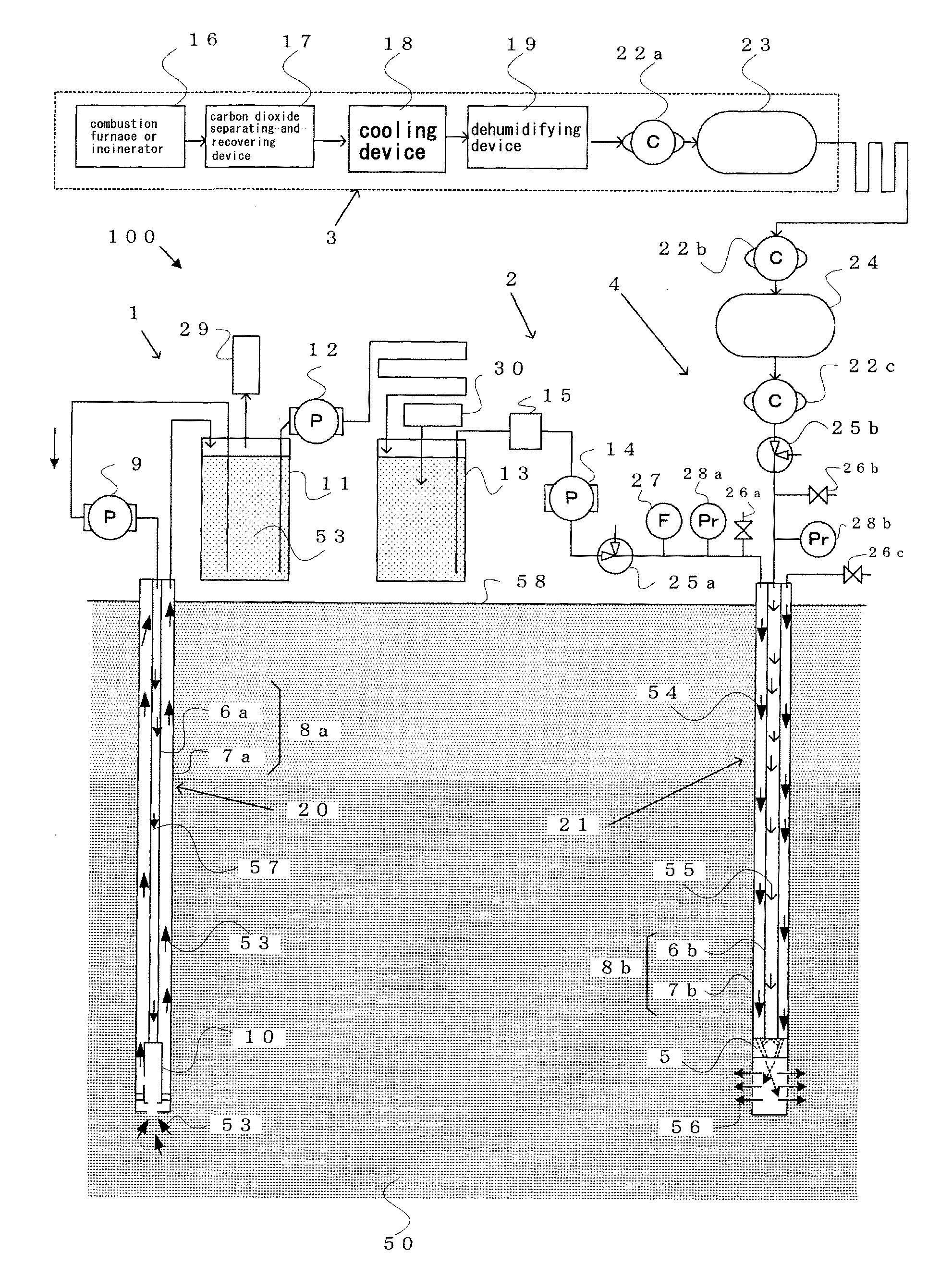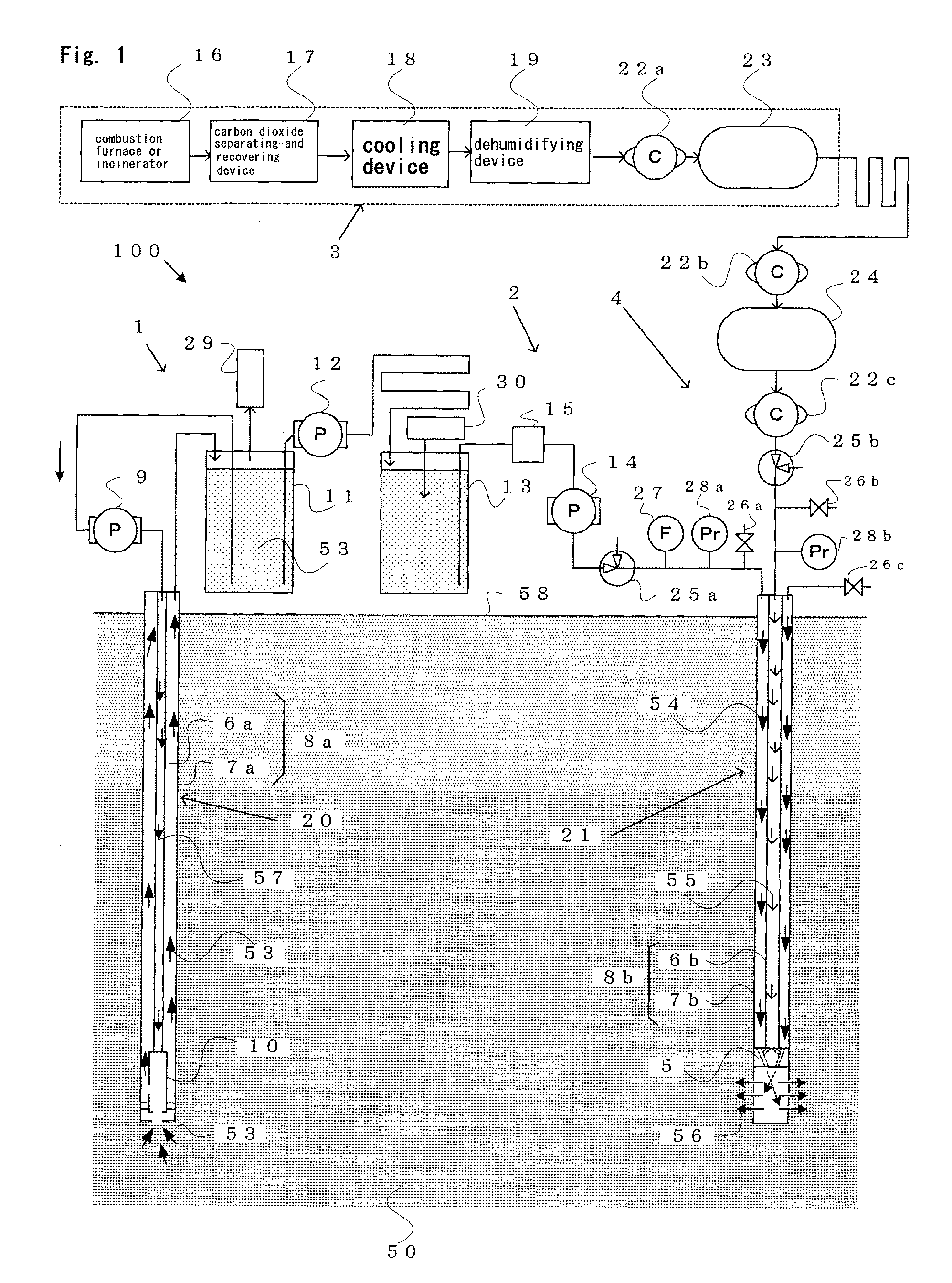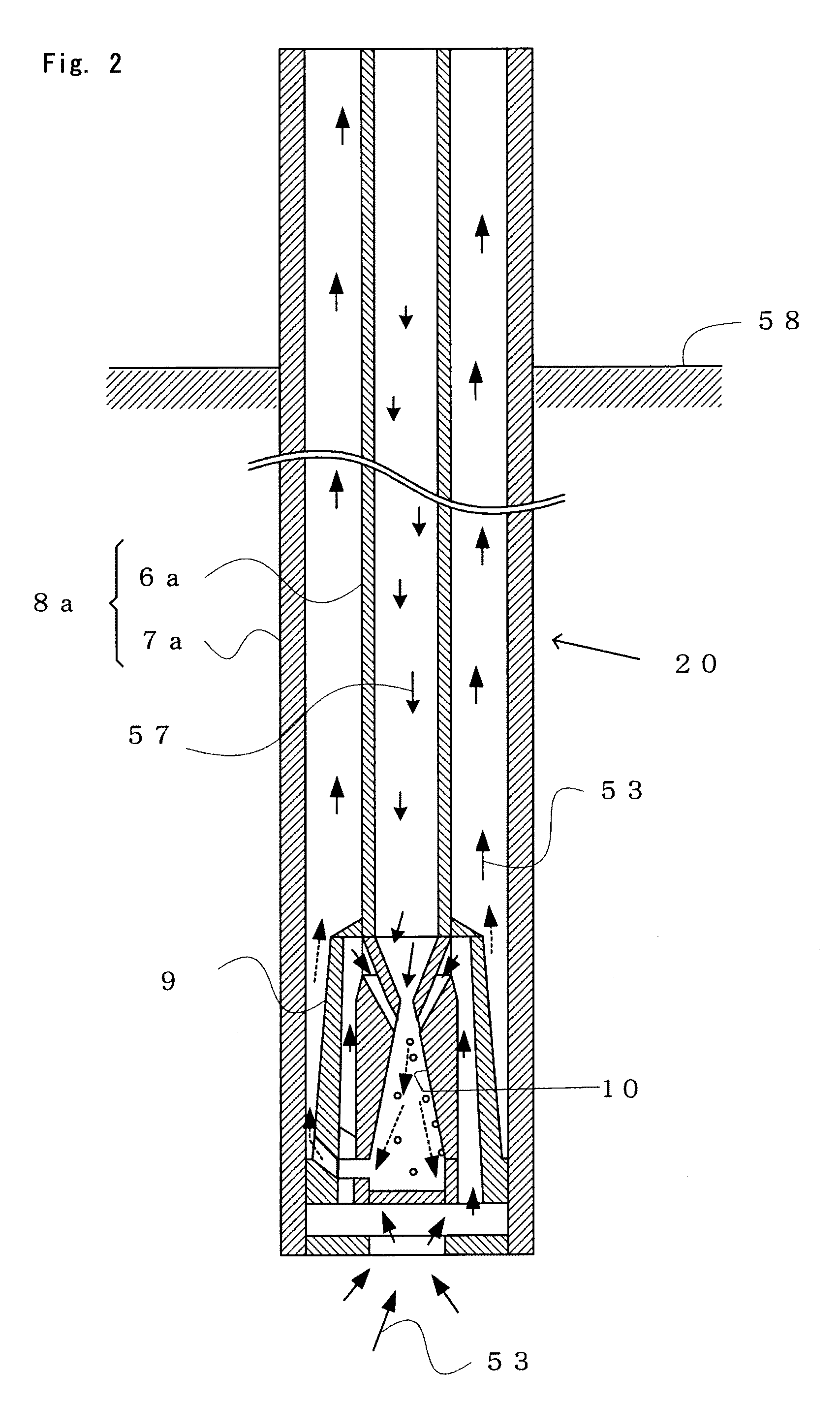System for treating carbon dioxide, and method for storing such treated carbon dioxide underground
a carbon dioxide and treatment system technology, applied in the direction of separation processes, nuclear engineering, wellbore/well accessories, etc., can solve the problems of difficult to achieve the 6% reduction goal, unsuitability for storing carbon dioxide underground, and high cost of further reducing carbon dioxide emissions, so as to achieve efficient carbon dioxide bubble production and prevent upward diffusion of carbon dioxid
- Summary
- Abstract
- Description
- Claims
- Application Information
AI Technical Summary
Benefits of technology
Problems solved by technology
Method used
Image
Examples
embodiment 1
[0085]FIG. 1 shows the constitution of the present invention's system for storing carbon dioxide underground.
[0086]The carbon-dioxide treating system 100 includes[0087]a pumping well 20 that reaches a deep aquifer 50,[0088]a pump 1 that pumps up groundwater 53 from the pumping well 20,[0089]an injection well 21 that reaches the deep aquifer 50,[0090]a liquid injection device 2 that feeds pumped-up groundwater 53—as injection water 54—into the injection well 21,[0091]a gas injection device 4 that feeds into the injection well 21 carbon dioxide 55 that has been separated and recovered from exhaust gas from an outside plant facility 3, and[0092]a nozzle 5 that changes the carbon dioxide 55 into fine bubbles inside the injection well 21.
[0093]The carbon dioxide 55 is changed into fine bubbles by the nozzle 5, and the fine bubbles are then dissolved in the injection water 54. A gas-liquid mixture 56 of carbon dioxide 55 and injection water 54 is injected into the deep aquifer 50. The pla...
PUM
| Property | Measurement | Unit |
|---|---|---|
| depth | aaaaa | aaaaa |
| distance | aaaaa | aaaaa |
| height | aaaaa | aaaaa |
Abstract
Description
Claims
Application Information
 Login to View More
Login to View More - R&D
- Intellectual Property
- Life Sciences
- Materials
- Tech Scout
- Unparalleled Data Quality
- Higher Quality Content
- 60% Fewer Hallucinations
Browse by: Latest US Patents, China's latest patents, Technical Efficacy Thesaurus, Application Domain, Technology Topic, Popular Technical Reports.
© 2025 PatSnap. All rights reserved.Legal|Privacy policy|Modern Slavery Act Transparency Statement|Sitemap|About US| Contact US: help@patsnap.com



